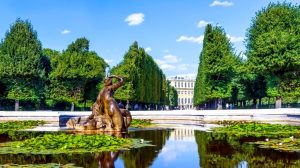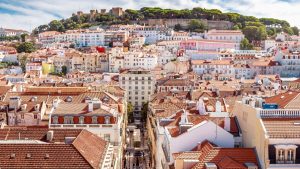
Milan is known for its magnificent Duomo Cathedral and numerous fashion boutiques.
But did you know it’s over 2,600 years old?
Or that it hosts the greatest number of Leonardo da Vinci’s works?
On this list, you’ll discover 33 fun and interesting facts about Milan.
From the fun trivia that will make you smile to the most curious details, every Milan fact in this article will make you want to visit the city.
Let’s explore, shall we?
Start Planning Your Trip to Milan with Our BEST Recommendations:
⭐ Top Tours in Milan ⭐
📍 Milan Historical Walking Tour – visit the highlights of Milan’s Renaissance history and skip the lines to see Da Vinci’s “The Last Supper”.
📍 Pasta and Risotto Cooking Class – explore Milan’s central market and learn how to prepare authentic Italian dishes in a fun and entertaining environment.
⭐ Best Accommodations in Milan ⭐
🏨 iQ Hotel Milano – our top pick is this 4* gem near Milano Centrale.
🏨 Heart Milan Apartments Duomo Colonne – funky lodging near the Duomo.
⭐ Easiest Transportation Options in Milan ⭐
🚍 The Milan Pass City Card – enjoy discounts, free travel, and entrances to museums.
🚍 Discover Cars – compare and find the best rates for car rentals.
✅ Note: This article contains affiliate links. In case you purchase something through one of these links, we may receive a small commission at no extra cost to you. Thank you for helping us keep creating the free content on this website!
Interesting Facts About Milan That Will Make You Book a Trip

The capital of Lombardy is a fascinating place to explore. The following intriguing facts about Milan will persuade you to include it in your next Italian itinerary.
- Milan is the largest city in the country. This might surprise you, but the capital Rome isn’t the biggest Italian city. It’s not even the second-biggest. Measured by agglomeration, Milan is Italy’s largest city with a population of 6.15 million people. Naples is second with a little over 4 million. The capital comes third with 3.45 million. Now, that’s an interesting fact about Milan you didn’t know, did you? Note: By city proper, Rome is the largest, and Milan is second.
- The city is one of the four fashion capitals of the world. Along with Paris, New York, and London, Milan is known as one of the world’s fashion capitals. The Lombardian capital is home to a Fashion district, one of the oldest shopping arcades in the world, and vogue powerhouses like Armani, Dolce & Gabbana, Gucci, Prada, and Versace. So, leave your old coats at home and get ready to change your whole wardrobe.
- Milan is home to the biggest football stadium in Italy. Stadio Giuseppe Meazza, more popular as San Siro Stadium, is the largest Italian arena and one of the biggest in Europe. The stadium has a capacity of 80,000 people. Curiously, it’s home to not one but two of the most prominent football clubs in Europe: AC Milan and Inter Milan. If you’re a sports fan, don’t miss the museum, which displays trophies and memorabilia of the two squads.
- The Italian city hosts the most prominent opera house in Europe. Milanese are known for their love for music. It comes as no surprise that Milan is home to Teatro alla Scala, the most famous opera house in Europe. The theater was inaugurated in 1778 and can seat up to 3,000 spectators. Over the years, many great composers, conductors, and singers have performed at La Scala. The list includes premieres of Bellini, Donizetti, Rossini, and Verdi. Peculiarly, the repertoire is more diverse than that of the other leading opera houses, including performances of unfamiliar works.
- Milan is home to one of the largest cathedrals in the world. One of the most interesting facts about Milan is that it’s home to the gigantic Duomo di Milano. The cathedral can hold up to 40,000 people, making it the fifth-largest worldwide. The stunning church is a beautiful work of art featuring 135 spires and over 3,400 statues. We’ve prepared more stunning facts about the Duomo below, so keep reading.

- Milan houses some of the tallest buildings in Italy. Since 2010, the city has grown vertically at a rapid pace. During this period, the title of “The Tallest Building in Milan” changed several times. Currently, Torre Unicredit holds the top position not only in Milan but in Italy. It was constructed in 2011 and rises 758 ft. (231 m) high. Another notable skyscraper in Milan is the Allianz Tower. It has more floors than the Unicredit Tower (50 vs. 35 stories) but is a few feet shorter.
- The city is home to the largest number of Leonardo da Vinci’s works. Apart from the masterpiece “The Last Supper” in the refectory of Santa Maria delle Grazie, Milan holds many other Leonardo da Vinci creations. The Museo Nazionale della Scienza e della Tecnologia is home to numerous recreated works from da Vinci’s designs and is the largest exhibition to celebrate his genius. Other places to see his legacy in Milan include Leonardo 3 and the Ambrosian Library.
- Leonardo da Vinci was the brain behind the canal system in Milan. Ludovico il Moro, the Duke of Milan in the 15th century, commissioned a project to build canals. Their purpose was to transport materials for the construction of the Duomo. Leonardo da Vinci designed and perfected the network of canals himself. Nowadays, you can explore the remaining canals in the Navigli District, which is one of the best areas to stay in Milan.
- The Lombardian capital has one of the oldest and best-designed tram systems in Europe. The first trams in the city were introduced in 1881 and were horse-driven. Nowadays, Milan boasts 17 urban and one intercity line. The total length of the tracks is approximately 113 mi (181.8 km). Hop on the wooden trams on Line 1, Line 2, or Line 3. They dissect the historic center and are a unique and affordable way to explore the main attractions.
- Milan is the wealthiest city in Italy. The region of Lombardy, where Milan is located, is also the richest in Italy. Most of this wealth is due to the economic power of the province capital, Milan. For travelers, this means one thing – the city is quite expensive. But don’t worry about that as there are at least 33 free things to do in Milan.
Curious Historical Facts About Milan
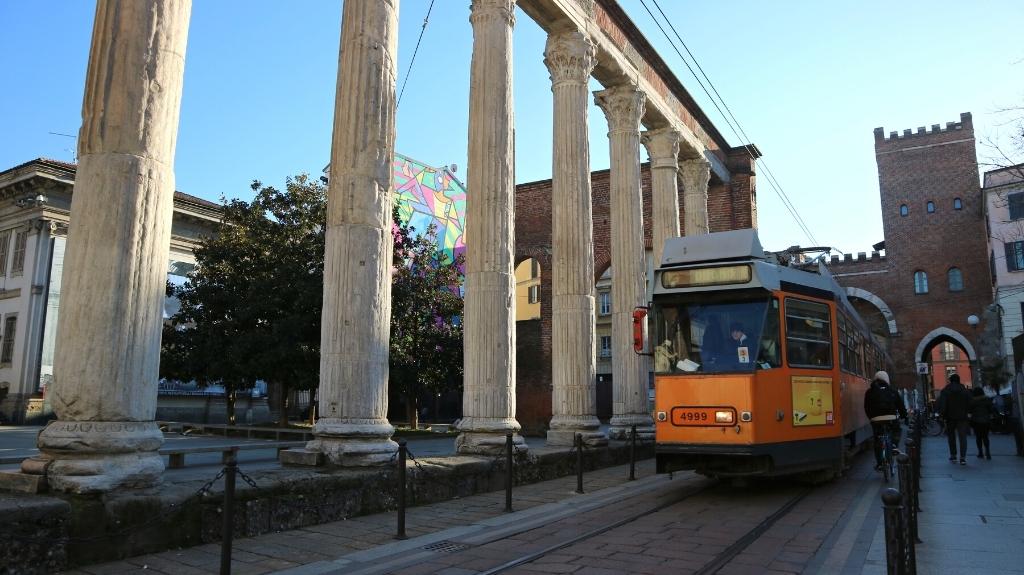
The history of Milan is multilayered and multifaceted. In the section below, you’ll discover the most peculiar historical facts about Milan.
- Celts gave Milan its original name. The Insubre Celts were the first to settle in the area around 600 BC. They named the settlement Medhelanon, meaning “sanctuary”. In 222 BC, the Romans conquered the Celts and renamed the city Mediolanum (or Milan), a Latinized version of the original name. In the 3rd and 4th centuries, Milan was the residence of Maximian, ruler of the Western Roman Empire.
- Milan has been part of France, Spain, and Austria. During the Italian Wars, the French King Louis XII was asked to help Lombardy. However, he seized the opportunity and in 1500 claimed the Duchy of Milan. 25 years later, the Spanish emperor Charles V defeated the French, and the region became part of Spain. After about two centuries, Spain relinquished the Duchy of Milan to Austria by the treaty of Utrecht. Milan eventually became part of Italy in the second part of the 19th century, after the unification of the country.
- Three defensive walls have protected the city. Throughout the centuries, three different systems have protected Milan as it expanded. Roman, medieval, and Spanish walls tried to stop invaders. Nowadays, several of the remaining gateways are worth exploring. Check out Porta Ticinese Medievale, Porta Venezia, and Porta Garibaldi. Each one is from a different era and represents a different architectural style.
- Napoleon Bonaparte was crowned “King of Italy” in Duomo di Milano. Napoleon Bonaparte and the French army invaded and conquered most of today’s Italy in the early 18th century. He then named himself King of Italy. Napoleon received his crown in 1805 in the Milan Cathedral. When the French occupation ended, the Congress of Vienna in 1815 returned Lombardy, including Milan, to Austria.
- Duomo’s construction took almost six centuries. The Milan Cathedral took about 579 years to complete. The construction of the gorgeous church started in 1386 and ended in 1965. The most famous Milan cathedral suffered damage during WWII, which significantly delayed completion. Having in mind that the marble edifice is one of the largest in the world, it can hold 40,000 people, and it features 135 spires plus 3,400 statues, it’s not difficult to understand why it took nearly six centuries to finish.
Unbelievable Facts About Milan

From pink birds to a temple decorated with human bones, let’s explore the most surprising Milan facts.
- You can spot pink flamingoes in Milan. If you peek into the park of Villa Invernizzi, you can see pink flamingoes walking around gracefully. About a dozen of the elegant birds occupy the garden. Some of them are over 25 years old. Unfortunately, the park is closed to the public. You can steal a glance by looking through trimmed bushes or under the low fence.
- Milan has the greatest number of foreigners in Italy. Milan’s city proper population is 1.4 million, out of which 19% are foreign-born. This has earned Milan the moniker “The City of Foreigners”. Another curious fact about the Italian city is that it has the largest Filipino population in Europe. Over 41,000 Filipinos live in Milan, which is more than 33% of all Filipinos residing in Europe. The city is also home to a strong Chinese community, with about 21,000 people.
- In Milan, there’s a church decorated with human bones. Initially, San Bernardino alle Ossa was built as an ossuary for human bones. They came from a nearby hospital and its cemetery, which couldn’t accommodate the growing pile of dead bodies any longer. A few decades later, a chapel was erected just beside the ossuary. The designers used bones to decorate the niches and doors in Rococo style. This has to be one of the creepiest facts about Milan, right?
- The Milan Conservatory rejected Giuseppe Verdi. The prominent 19th-century composer is world-famous for his operas Aida, Rigoletto, and La traviata. At the start of his musical career, he applied to study at the Conservatory in Milan. He didn’t pass the admission exam because the jury deemed him “musically inept”. Ironically, nowadays, three Italian conservatories – in Milan, Turin, and Como – as well as countless Italian theatres are named after Verdi.
- The symbol of Milan depicts a snake eating a man. The historic symbol of the city is an image of a biscione devouring a human. The creature is a “big grass snake”, and it’s actually unclear whether it’s eating or giving birth to the human figure in the heraldic charge. Many legends about the origin of the depiction exist. A good number of Italians swear the snake is the symbol of the Visconti family, but there’s a lot of disagreement regarding how the family adopted that symbol. Nowadays, many Milanese companies have incorporated the image into their brands, such as Alfa Romeo and Inter Milano.
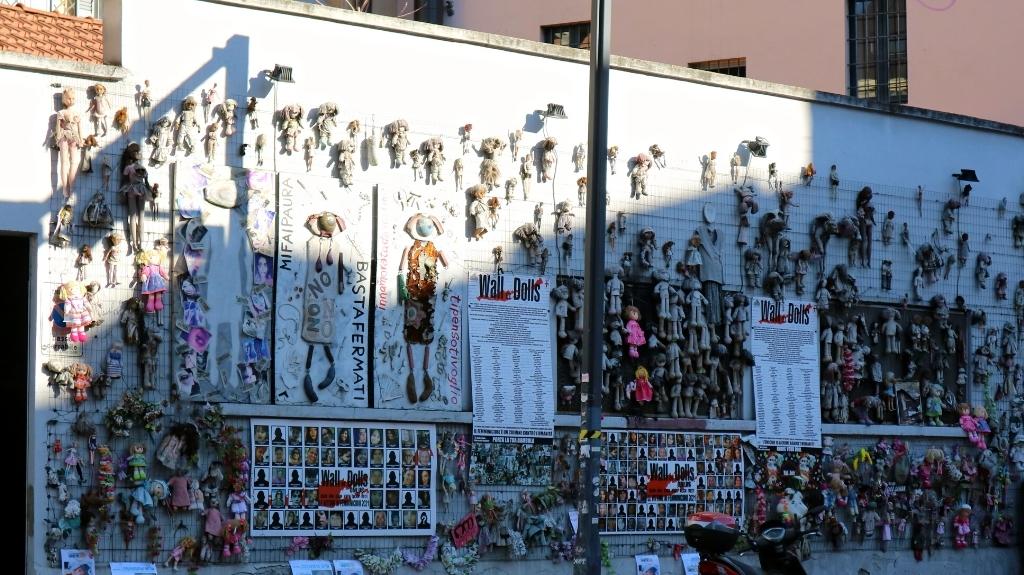
- A famous Milanese street art mural raises awareness of violence against women. Milan teems with incredible graffitis and murals. You can find one of the best-known street art installations next to Porta Ticinese Medievale. “The Wall of Dolls” is a gray framework featuring hanging dolls of different shapes and sizes. Photos, posters, dried flowers, and poems complete the touching installation. Some of the writings contain detailed statistics on crimes against women, while others – the powerful recollections of the victims.
- The oldest shopping mall in Italy is in Milan. Galleria Vittorio Emanuele II carries the name of the first King of Italy. The luxury shopping arcade was built between 1865 and 1877, making it one of the oldest in the world. If you don’t want to break the bank, skip the extravagant deals of the boutiques occupying the historic mall. Instead, take your time to admire the architecture of the building for free. The intricate floor mosaics feature the coats of arms of Milan, Turin, Florence, and Rome, while an elaborate iron-and-glass roof covers the arcade.
- The gargoyles decorating the Duomo are up for adoption. You can pay to adopt one of the 96 gargoyles on the façade of the Milan Cathedral. Authorities formed this initiative to raise funds and get more Milanese involved in the preservation of the temple. It’s even possible to have your name engraved on your adopted gargoyle, for the “reasonable” price of €100,000. What a cool Milan fact, right?
- A cemetery is one of Milan’s top attractions. Cimitero Monumentale is one of the most unusual places you can visit in Milan. The Monumental Cemetery is a huge park, which houses stunning funerary sculptures and family tombs in various architectural styles. Despite the spooky associations of the place, the graves of prominent Milanese artists, architects, and wealthy citizens are worth exploring. If you decide to include the cemetery on your itinerary, please be respectful of the dead.
Fun Facts About Milan That Will Make You Smile
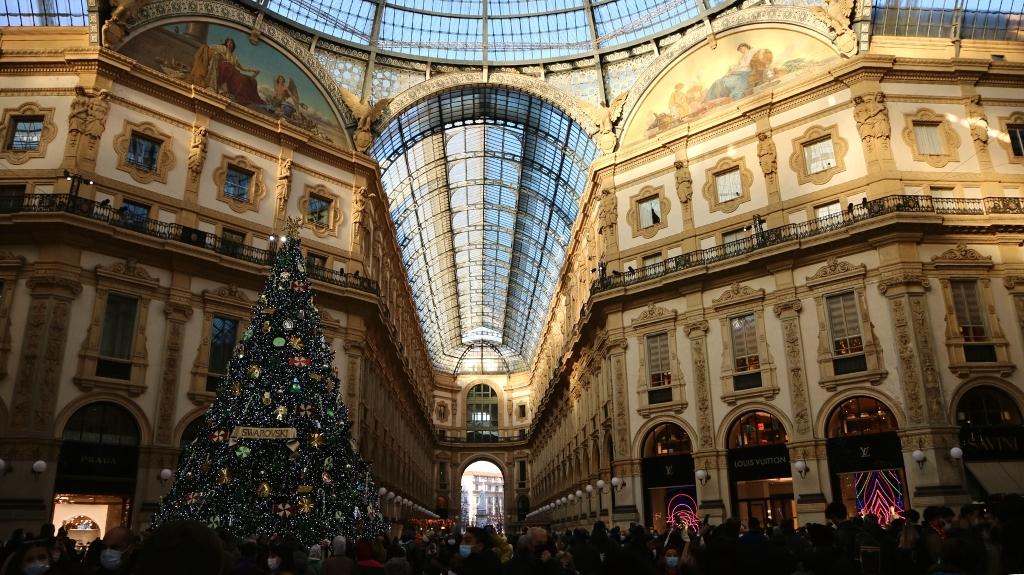
We saved the best for last. In this section, you’ll have a chance to explore the most fun facts about Milan.
- If you spin on the testicles of the Milan bull, good luck will follow you. On the floor of Galleria Vittorio Emanuele II, you’ll find a mosaic of Turin’s coat of arms. It features the figure of a bull. Legend has it, that if you can spin on the bull’s testicles three times on your heel, you’ll have one year of good fortune. So, next time you visit the arcade and see a large crowd gathered around the mosaic, don’t hesitate to join the line!
- Milan is famous for Aperitivo. The concept of the aperitivo hour stems from Milan in the 1920s. You can enjoy the after-work drink all over Italy, but in Milan, it’s a whole ritual. Between 6:00 and 8:00 PM, the whole city loves to enjoy a spritz. Aperitivo is an appetizer – a drink used to open the belly for more food. Usually, the drinks are bitter-sweet and slightly alcoholic. You can order aperitivo in cafés, bars, and restaurants in Milan, and it usually comes with a snack or some sort of finger food.
- One of the biggest celebrations in Milan is the Feast of St. Ambrose. On December 7, the Milanese celebrate St. Ambrose, the city’s patron saint. St. Ambrose was the Bishop of Milan in the 4th century. He was a public figure, who spent his life studying theology and taking care of the poor. The celebrations in his honor include a procession through the streets of Milan. It features a band and a display of the saint’s statue. A special mass is also held at the Basilica of Sant’Ambrogio, with people singing for days. During the feast, the famous the Oh Bej! Oh Bej! street market takes place as well.
- Some of the best museums in Milan occupy gorgeous palaces. The list of museums and galleries making Milan worth visiting is virtually endless. Many spots occupy majestic palaces and townhouses. By visiting them, you’ll not only explore their jaw-dropping architecture but also get lost in timeless art. We recommend checking out the fantastic Pinacoteca di Brera, the royal Palazzo Reale di Milano, the grand Palazzo Marino, and the gracious Poldi Pezzoli Museum.
- A Milanese library holds one of the most valuable collections on the planet. Biblioteca Ambrosiana was founded in 1609. It carries the name of St. Ambrose, the patron saint of Milan. The historic library is an incredible treasure trove. It keeps hundreds of priceless ancient manuscripts, such as Leonardo da Vinci’s Codex Atlanticus, as well as paintings by Caravaggio, Botticelli, Raffaello, and Titian. You can explore the legacy of the great Renaissance artists by ordering your ticket via this link.
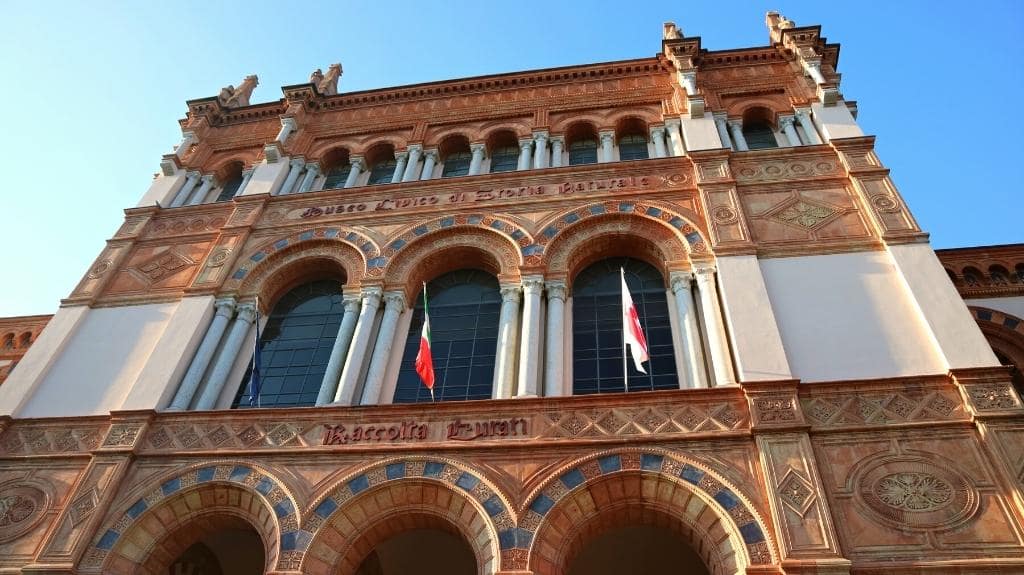
- You can see the world’s largest sulfur crystal in Milan. The city’s splendid Natural History Museum is located in the historic park Giardini Indro Montanelli. The museum occupies a stunning 19th-century edifice, which combines the Neo-Romanesque style with Gothic elements. Inside, you can explore rare fossils, valuable minerals, extinct species, and exciting dioramas of wild animals. The highlights of the museum’s collection include the world’s largest sulfur crystal, a Cro-Magnon skull, and Pygmy elephant skeletons.
- Milan has its own version of the famous Viennese schnitzel. Since the city was part of Austria in the past, it comes as no surprise that Milanese and Viennese cuisines share several similar dishes. The crunchy Costoletta alla Milanese is one of Milan’s oldest traditional meat meals. The fried veal cutlet is similar to the legendary Viennese Schnitzel. The recipe uses cutlets from a milk-fed veal with a bone. The breaded meat is fried in butter to become juicy and crunchy at the same time. Apart from this scrumptiousness, another popular food with Austrian roots is the bread roll called Michetta. It resembles the Vienna roll Kaisersemmel.
- A Milanese coffee drink made its inventor quite wealthy. The sweet Barbajada is a frothy drink, which incorporates equal parts of whipped cream, coffee, and chocolate. It was invented in the Caffé del Teatro near La Scala and was the favorite treat of the famous composer Gioacchino Rossini. The popularity of the drink peaked in the 19th and early 20th centuries, making its inventor rich. Nowadays, you can still order it in the cozy Milanese cafés.
- Milan’s castle houses over 10 museums. The marvelous Sforzesco Castle is a gigantic medieval fortress, which dates back to the 15th century. One of Milan’s top attractions, the massive structure houses more than 10 museums inside! And while entrance to the castle is paid, exploring its magnificent exterior and courtyard is free. Inside the castle, you’ll have the chance to admire famous works by Leonardo da Vinci and Michelangelo. To avoid queueing, we recommend getting your ticket in advance.
How Many of These Fun Facts About Milan Did You Already Know?
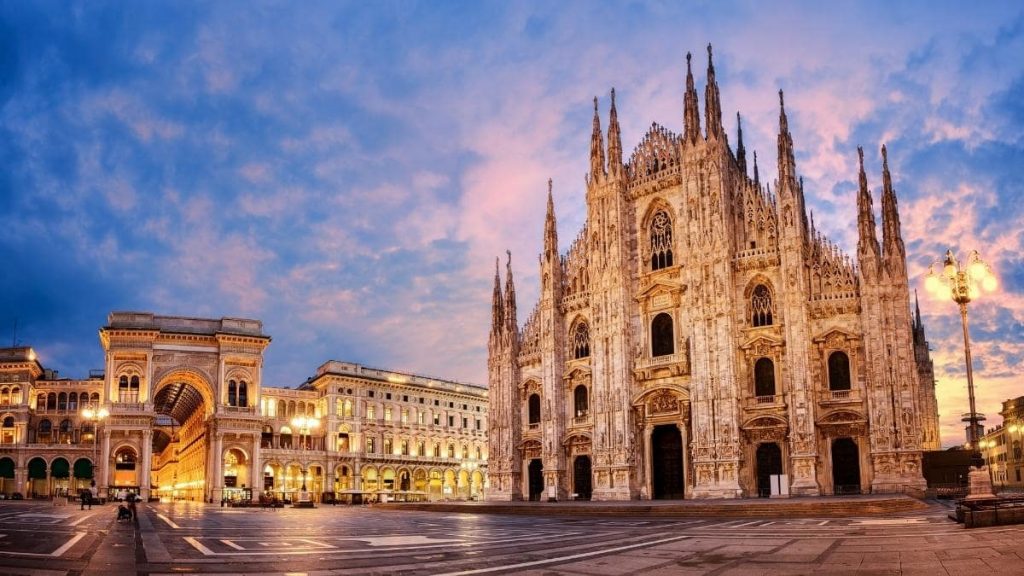
This wraps up our list with 33 fun and interesting facts about Milan.
The largest city in Lombardy teems with vibrant history, world-class art, and glamorous fashion boutiques.
This means one thing – you won’t ever get bored in the Italian city.
Start Planning Your Trip to Milan with Our BEST Recommendations:
⭐ Top Tours in Milan ⭐
📍 Milan Historical Walking Tour – visit the highlights of Milan’s Renaissance history and skip the lines to see Da Vinci’s “The Last Supper”.
📍 Pasta and Risotto Cooking Class – explore Milan’s central market and learn how to prepare authentic Italian dishes in a fun and entertaining environment.
⭐ Best Accommodations in Milan ⭐
🏨 iQ Hotel Milano – our top pick is this 4* gem near Milano Centrale.
🏨 Heart Milan Apartments Duomo Colonne – funky lodging near the Duomo.
⭐ Easiest Transportation Options in Milan ⭐
🚍 The Milan Pass City Card – enjoy discounts, free travel, and entrances to museums.
🚍 Discover Cars – compare and find the best rates for car rentals.
Now we’d love to know:
Which was your favorite Milan fact?
Tells us in the comments below.




